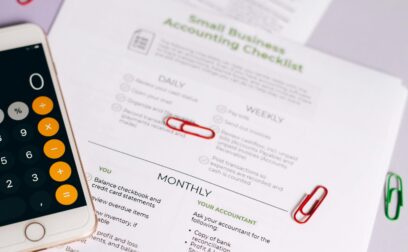TABLE OF CONTENTS
As the post-COVID-19 recovery gathers pace, South Arica’s road passenger transport network is roaring back to life.
As passenger numbers grow, so bus and coach operators must update, replace and expand their vehicle line-ups. No matter if you need one vehicle, or a whole fleet of buses and coaches, financing your acquisition(s) makes best business sense. Read on to find out more about bus and coach finance and how it can put you in the driving seat.
Instead of putting strain on cashflow and tying up hard-won capital in your vehicles, spread the cost over time.
Whether you need new buses to manage city operations, a rural network, charter hire, or shuttle runs, financing your operations with one of our borrowing options is the best way to go. Buy to keep, rent with an option to buy, or simply rent and return. Whichever route is best for your bus business, we have the right loan for you.
Never ending disruptions to the rail network reveal how important coach operators are to keep the nation on the move. Whether you’re replacing older vehicles or expanding to meet demand, financing your operations with one of our borrowing options is the best way to go. Buy to keep, rent with an option to buy, or simply rent and return. Whichever route is best for your coach business, we have the right loan for you.
Hire purchase is an easy way to finance the purchase of new or used buses and coaches . In most cases you will pay an upfront deposit, typically 10-15% of the purchase price. You then pay off the rest of the cost of the vehicle in equal monthly instalments. This means you don’t own the vehicle(s) until the last payment is made. The bus or coach acts as security for the loan.
Hire purchase with a balloon works like regular hire purchase finance, except you don’t pay off the entire cost of the vehicle over time. Instead, you delay paying some of the purchase price until the very end of the contract – a larger lump sum that is known as the ‘balloon’. This type of finance offers lower monthly instalments, but it means you must have funds to pay the balloon at the end. You will not own the bus or coach until the entire cost of the vehicle is repaid. The bus or coach acts as security for the loan.
Finance Leasing allows your business to use a bus or coach for a fixed period and for an agreed maximum mileage at a fixed monthly rental cost. At the end of the contract period you have the option to purchase the vehicle for a pre-agreed sum. A finance lease allows businesses to spread the cost of the vehicle over time and with lower monthly payments than if they were to purchase the bus or coach.
Similar to finance leasing, but the lessee (you), cannot purchase the bus or coach at the of the contract. Additionally, the agreement will include a residual value that is based on the period of the lease and your anticipated annual mileage. The residual value is the estimated value of the vehicle at the end of the contract.
At the end of the agreement the bus or coach is sold to a third party on behalf of the finance company. If the vehicle sells for more than the residual value, the finance company will refund a percentage of the surplus back to you, (typically 95 to 97.5%). If the vehicle sells for less than the residual value, you will be liable to make a further payment to the finance company.
An operating lease allows businesses to use the bus or coach for a lower monthly cost that finance leasing or buying a vehicle with hire purchase. Operating leases may come with included maintenance and repairs, but there is always a mileage cap.
The simplest form of lease. Contract hire is just a long-term rental. You rent the bus or coach for a fixed term – usually 2-3 years – and pay a fixed monthly sum for its use. Maintenance and repairs are included in the deal, as is a mileage cap. At the end of the contract, you hand the vehicle back to the lessor. If the mileage is over the pre-agreed limit, you must pay for every extra mile. Excess damage charges may also be imposed. There is no Residual Value to meet, and no option to buy the van.
Bus and coach refinancing is a secondary line of borrowing that can be used to pay off the lump sum payment at the end of a HP+Balloon purchase scheme. Instead of digging deep to pay off the HP loan, your business takes out a new loan to cover the cost of the balloon. This takes the strain off cashflow and allows you to keep the vehicle as you repay the lump sum over 1-5 years.
Bus and coach refinance may also be used to achieve a better rate of interest with a different lender. It is also another name for a sale-leaseback deal, where you sell the vehicle to raise liquid cash and then leases (rents) the vehicle back for a fixed period. (Find out more below).
Sale and leaseback is not a way to buy a bus or coach, it’s a way to release the tied-up capital that your business already has in its vehicles. Think of sale and leaseback as a form of equity release. In a sale and leaseback scheme, a business sells their bus or coach to a finance company, who then lease (rent) the vehicle back to the business for a fixed term. The business pays a low monthly sum to use the bus or coach and are free to use the cash they have released from the value of the vehicle however they wish. At the end of the lease, the finance company owns the bus or coach. Sale and leaseback removes the depreciating cost of vehicles from the liability side of the balance sheet. This can improve your business’ net value.
Compare the different features of popular bus and coach finance options:
| Type of finance | Upfront deposit? | Balloon payment? | Do you own the vehicle at contract end? | Maintenance included? | Excess miles charges? |
|---|---|---|---|---|---|
| Hire Purchase | Yes | No | Yes | No | No |
| Hire Purchase with balloon | Yes | Yes | Yes | No | No |
| Sale and Leaseback | No | No | No | Possibly | Yes |
| Finance Lease | Yes | No | Optional | Possibly | No |
| Operating lease | Yes | Possibly, or you may collect a surplus | No | Yes | Yes |
| Contract hire | Yes | No | No | Yes | Yes |
| Refinance | No | No | Yes | No | No |
Bus and coach financing is a niche area, with differing rules of application. Transport company owners seeking this type of borrowing may find themselves forever searching and making applications to lender after lender. The delays this can create could cause you to lose business and leave your company vulnerable to the competition. Instead, working with a broker, who can access bus and coach loans from a wide range of lenders is a better way to go. No more cold calls and endless demands for information. Simply tell us what you need and leave the rest to us.
Get in the fast lane with Swoop – discover the best rates, the best terms and the best bus and coach loans now.
Swoop was amazing! I was looking for refinancing and they were straight onto finding me the best possible option. I would highly recommend them.
Laree Smith
Owner, F45 Cambridge
Written by
Chris is a freelance copywriter and content creator. He has been active in the marketing, advertising, and publishing industries for more than twenty-five years. Writing for Barclays Bank, Metro Bank, Wells Fargo, ABN Amro, Quidco, Legal and General, Inshur Zego, AIG, Met Life, State Farm, Direct Line, insurers and pension funds, his words have appeared online and in print to inform, entertain and explain the complex world of consumer and business finance and insurance.
Swoop promise
At Swoop we want to make it easy for SMEs to understand the sometimes overwhelming world of business finance and insurance. Our goal is simple – to distill complex topics, unravel jargon, offer transparent and impartial information, and empower businesses to make smart financial decisions with confidence.
Find out more about Swoop’s editorial principles by reading our editorial policy.
Join the 110,000+ businesses just like yours getting the Swoop newsletter.
Free. No spam. Opt out whenever you like.
Kingfisher Way, Silverlink Business Park, Newcastle upon Tyne, NE28 9NX, UK
View in Google MapsAberystwyth Innovation and Enterprise Campus
Gogerddan Campus
Aberystwyth University
Ceredigion
SY23 3EE
Dogpatch Labs, The CHQ Building, Custom House Quay, Dublin, Ireland
View in Google MapsSuite 801, Level 8, 84 Pitt Street, Sydney, NSW 2000, Australia
View in Google Maps43 W 23rd St, New York, NY 10010, United States
View in Google Maps21 Dreyer Street, Cape Town, South Africa, 7708
View in Google MapsDisclaimer: Swoop Finance helps South African firms access business finance, working directly with businesses and their trusted advisors. We are a credit broker and do not provide loans or other finance products ourselves. We can introduce you to a panel of lenders, equity funds and grant agencies. Whichever lender you choose we may receive commission from them (either a fixed fee of fixed % of the amount you receive) and different lenders pay different rates. For certain lenders, we do have influence over the interest rate, and this can impact the amount you pay under the agreement. All finance and quotes are subject to status and income. Applicants must be aged 18 and over and terms and conditions apply. Guarantees and Indemnities may be required. Swoop Finance can introduce applicants to a number of providers based on the applicants’ circumstances and creditworthiness. Swoop Finance (Pty) Ltd is registered with CIPC in South Africa (company number 2023/820661/07, registered address 21 Dreyer Street, Cape Town, South Africa, 7708).
Clever finance tips and the latest news
Delivered to your inbox monthly
Join the 110,000+ businesses just like yours getting the Swoop newsletter. Free. No spam. Opt out whenever you like.




